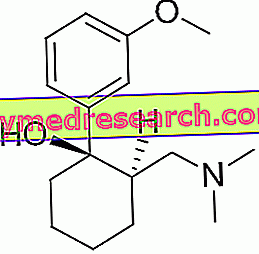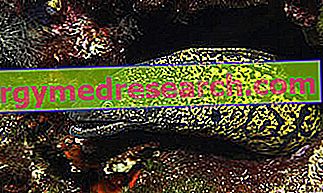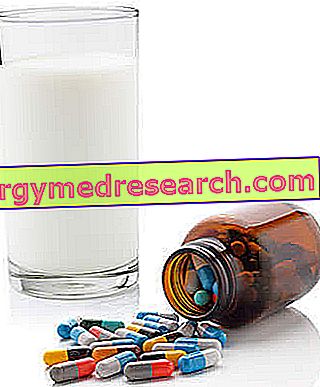Definition
The term "Claudicatio intermittens" refers to a complex pseudo-pathological condition - also known as "intermittent lameness" - characterized by a pain in the leg similar to cramps, associated with difficulty walking and weakness. Intermittent claudication tends to recur after a subsequent effort, or following prolonged use of the limb.
Causes
The Claudicatio intermittens is the result of a peripheral vasculopathy: atherosclerosis causes a marked reduction of the blood flow to the leg muscles, consequently the patient who is affected has cramp-like pains which, degenerating, prevent correct walking.
Symptoms
The Claudicatio intermittens generally begins after an effort, with pains of variable entity at the level of the calf, of the flank or of the buttock; these cramps become more and more intense, up to heavily compromising the correct ambulation. Claudicatio intermittens may be accompanied by other symptoms: thinning of the skin, cyanosis, cold extremities, tingling, pallor, loss of hair, sensation of cold, dizziness. In the most severe cases, the intermittent claudication generates skin ulcerations.
Information on intermittent Claudication - Drugs for the Treatment of Intermittent Claudication is not intended to replace the direct relationship between health professional and patient. Always consult your doctor and / or specialist before taking Claudicatio intermittens - Drugs for the treatment of intermittent claudication.
drugs
The Claudicatio intermittens is not a disease in all respects, since it is a consequence of an atherosclerotic plaque positioned in an artery of the leg; according to this, it is quite understandable how the treatment of the pathology in progress produces, as a consequence, also the healing of secondary symptoms.
Moreover, since rest improves the symptoms, it is recommended to avoid excessive efforts and to use the limb for too long periods, to prevent the pain from appearing again.
A certain correlation has been observed between the onset of intermittent claudication and smoking, obesity, diabetes and hyperlipidemia; clearly, the correction of these disorders is a very useful rule to avoid the onset of intermittent Claudication and atherosclerosis.
- Cilostazol (eg Pletal): it is a cardiovascular agent, inhibitor of platelet aggregation, with a peripheral vasodilator action. The drug is useful for preventing intermittent claudication, as well as producing positive effects on cholesterol levels; it is the active ingredient of choice used for the treatment of the symptoms associated with atherosclerosis. Indicatively, it is recommended to take the drug at a dose of 100 mg, orally, twice a day, to be administered at least half an hour before breakfast; alternatively, it is possible to take the drug 2 hours after breakfast or dinner.
- Pentoxifylline (eg Trental): it is a peripheral vasodilator, used in therapy for the treatment of numerous vascular pathologies, species referred to atherosclerosis and diabetes, including the Claudicatio intermittens. The dosage of this active ingredient is the following: 400 mg of drug to be taken orally, three times a day, or 600 mg twice a day. If side effects occur, the dose can be reduced to 400 mg twice a day; it is recommended to take this drug for the treatment of intermittent claudication after meals, preferably always at the same time, in order to obtain a constant and prolonged therapeutic effect over time.
- Acetylsalicylic acid (Aspirinetta, Cardioaspirin): the drug reduces platelet aggregation by lowering the coagulative capacity of the blood; the effect is particularly important for preventing the thrombotic specco events associated with atherosclerosis. the most used dosage is 100 mg per day, to be taken in a single oral dose, with plenty of water, after meals.
- Clopidogrel (Plavix, Zyllt, Zylagren, Zopya, Iscover, Grepid, Clopidogrel Winthrop, Clopidogrel Acino): similarly to what we have seen for acetylsalicylic acid, the antiplatelet activity of clopidogrel is useful to prevent the formation of thrombi (blood clots ) in the arteries of the patient suffering from atherosclerosis and intermittent claudication. The recommended dosage is to take one tablet (75 mg) once a day.
Intermittent claudication and phytotherapy
Some staves can be a valid aid to lighten the pain symptomatology that accompanies the Claudicatio intermittens: the garlic and the ginkgo biloba represent the most valid herbal references, thanks to their antihypertensive, hypotiglyceridemizing, hypocholesterolemic and vasodilatory properties.
Despite being "natural", it is strongly advised against the administration of these extracts without consulting a specialist.
In the most serious cases, when evident beneficial effects cannot be obtained from the drugs, the symptoms accompanying the intermittent claudication can be reduced or removed only by angioplasty or insertion of surgical by-pass.



